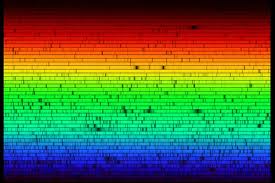The University of Sydney is hailing a breakthrough in solar photovoltaic technology that could lead to a significant boost in the efficiency of solar cells, and sharply lower costs for rooftop solar panels.
The breakthrough is based around a technology known as “photochemical upconversion” that allows energy that is normally lost in solar cells to be turned into electricity, and increase their efficiency to 40 per cent.
The university team led by Professor Tim Schmidt from the University’s School of Chemistry, together with the Helmholtz Centre Berlin for Materials and Energy in Germany, has dubbed the development a “turbo for solar cells”.
“Upconversion” is a process which harvests the part of the solar spectrum currently unused by solar cells and eliminates the need for costly redevelopment of solar cells.
“We are able to boost efficiency just by forcing two energy-poor red photons in the cell to join and make one energy-rich yellow photon that can capture light, which is then turned into electricity,” Professor Schmidt said in a statement.
“We now have a benchmark for the performance of an upconverting solar cell. We need to improve this several times, but the pathway is now clear.”
The university says that most solar cells use materials with a single energy threshold. However, particles of light (photons) with energy less than this threshold cannot be harvested by the cell and energy in excess of this threshold is lost as heat. These two effects conspire to limit the energy conversion efficiency of single threshold solar cells to about 33 per cent under the standard solar spectrum.
By harvesting energy photons which can be ‘glued’ together to make higher energy photons, the process has the ability to lift the efficiency rate of silicon-based PV cells to 40 per cent and bring down the cost of solar energy significantly.
Professor Schmidt told RenewEconomy that it had been know for some time that it was possible that efficiency gains of up to 43 per cent were available, it’s just that “we haven’t known how to do it.”
He added: “People have been trying to use rare earth ions, but these are inefficient. However, organic molecules (that we are using) are almost tailor-made for the process.” And, he notes, the process is cheap, so the extra power is essentially delivered for free, maximising the potential cost reductions.
Professor Schmidt said the potential for efficiencies in concentrating solar PV – were Australia is also a technology leader – may be even greater, and could boost efficiency to more than 50 per cent. “It is a very promising idea,” he said. “The upconversion process actually works better under concentration and it is easier for us to achieve high efficiencies.”
Despite the breakthrough, commercialisation of the technique may be more than 5 years away.
The research – a $2.1 million project – is being supported by the Australian Solar Institute, through its Australia-Germany Collaborative Solar Research and Development Program. ASI executive director Mark Twidell said the program was helping accelerate the pace of commercialisation of solar technologies and drive down the cost of solar electricity.
The findings of his team have been published in the Energy & Environmental Science journal (DOI: 10.1039/c2ee21136j) at http://pubs.rsc.org and a project fact sheet is available on the ASI website.






